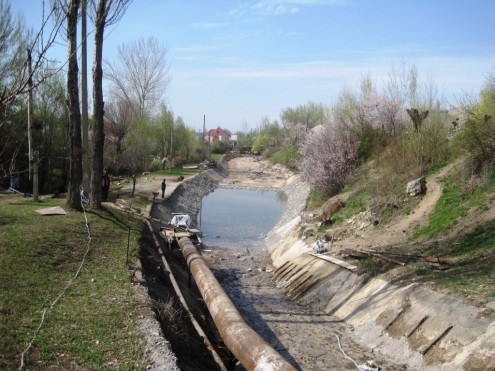
“Personally, I didn’t believe that our canal would be protected .... But, when I saw the work underway, I knew I was wrong,” said Barchynay Tashmatova, a farmer in Kara-Kulja. “Now we expect a better harvest.”
Lack of access to irrigation water has long been a source of tension in rural areas throughout the Kyrgyz Republic, particularly in southern regions. When inter-ethnic violence broke out in June 2010, competition for scarce natural resources became a flashpoint for conflict. Heavy floods, landslides and poor maintenance regularly impede the flow of water through irrigation channels to farms and households.
OTI supports local community efforts to provide equitable access to irrigation water, mitigating inter-ethnic violence and building citizen trust in the government. In partnership with local government offices, water user associations and international stakeholders, OTI has invested $2 million to date in multi-ethnic regions and rehabilitated 28 irrigation canals. These canals bring water to 82 communities in Osh and Jalalabad provinces, benefitting over 250,000 residents.
Local farmers reap the benefit of increased access to water almost immediately. When OTI and the Water Management Department in Kara-Suu district of Osh province restored water access along 12 kilometers of canals, farmers reported planting crops they were previously unable to grow due to flooding and mudflows. The Kizil-Tal village saw a 35 percent increase in water flow through the canals. In Kyzyl Mehnat village, confrontations between water distributors and farmers have ended. Canal renovation also spared five houses and one bridge in Osh city from mudflow damage. When canals function as planned, local water authorities see increased water user fee income that can be used for future maintenance.
Kanibek Alyazov, head of the Kara-Kulja district government, heralded the development effort: “[Our project] helped multi-ethnic communities in Uzgen and Kara-Kulja districts unite … when [doubters] saw the gabion netting, they trusted the project and told other farmers.”







Comment
Make a general inquiry or suggest an improvement.